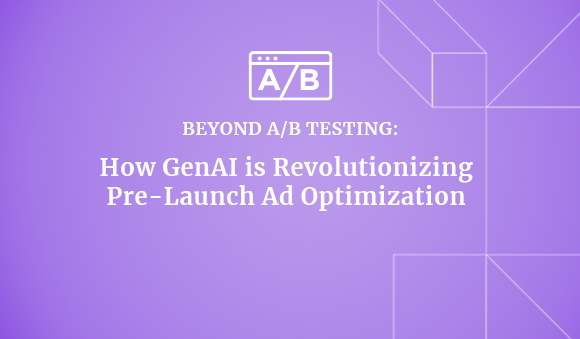In this article, we explore the ever evolving and all-encompassing term, brand perception, the sum of customers’ thoughts, feelings, and memories associated with a brand. Alongside, we also explore the factors influencing brand perception and rarely talked about the difference between a brand’s perception of itself and the customer’s perception of the brand.
With a valuation of $355.8 billion, Apple is the most valued brand in 2022. Apple’s brand value indicates how highly it is perceived and valued by its customers
While the brand (name, design, term, symbol, or other prominent feature) is an intangible asset, how it is perceived by customers (current and future) directly affects its growth.
What is Brand Perception?
Brand perception is an all-encompassing term that is the sum of customers’ thoughts, feelings, and memories associated with a brand’s name, product, music, colors, and various experiences across touchpoints. It can also be defined as ‘the value’ customers think they will derive from brand’s products and services.
For instance, Apple’s high brand value can be attributed to the perceived value of Apple products and services in the minds of their customers. Such high perceived value allows Apple to charge premium prices.
Apart from the direct impact on the bottom line, positive brand perception also adds intangible value to a brand as it is linked to various important aspects of building a brand like earning trust, establishing an emotional connection with the customers, setting & managing expectations, and more.
Establishing positive brand perception is important, but how does a brand ensure positive perception across all customer touchpoints?
While the brand might not be there to handhold its customers and target audience to explain itself and its messaging, there are a few ways to influence customer perception of the brand.
What Influences Brand Perception?
Brand perception is not just an ad, email, social media post, or sale. It is everything that happens before, during, and after the sale. All the avenues including reviews, experience, product functionality, advertising, social engagement, price, positioning, branding, and pre & post customer service create a brand’s perception in the customers’ minds.
While each customer touchpoint matters, there are a few aspects that are more influential than the others.
Customer experience
Customer experience is by far the most important aspect of establishing positive brand perception. And it is not limited to when customers are purchasing from a brand.
From the moment customers start looking for a brand, their interaction with the brand assets like website, various resources, advertisements, etc., and direct communication with the sales, customer support, and tech teams, to when they decide to make a purchase, require post-sale service, every touchpoint collectively makes for customer experience.
And every interaction needs to provide a consistent experience aligned with brand’s mission, vision, and value proposition to form a positive, consistent perception of the brand in customers’ minds.
Since every touchpoint matters, it becomes essential to invest time and resources to strengthen the brand’s presence across various digital and offline channels including but not limited to search engines, social media platforms, industry-related publications, and several types of physical outlets (if applicable).
For instance, while searching for a good running shoe, you might come across 10 distinct brands on Google, YouTube, other social media platforms and in malls. But the brands like Nike and Under Armor might stand out and be at the top of your mind considering they were either mentioned or recommended across all the possible channels.
Word-of-mouth
Word-of-mouth is the oldest form of marketing and yet, the most relevant and influential one.
In the digital era where people are over-stimulated and bombarded with information every second, word-of-mouth marketing makes a brand stand out by helping create a positive association and perception in the minds of the customers. Moreover, since the customers are getting information straight from the horse’s mouth, it adds credibility.
Continuing the Apple example, one of the reasons why Apple enjoys positive brand perception across the globe is their customers who are loyal to the brand, advocate their experience, quality, and overall luxury that Apple products provide.
Advertisement
Most often than not, advertisements are the first point of contact between a brand and its customers, and it is the point where the expectations are set for the future. Be it a brand launch, product launch, or rebranding campaign, advertisement is among the most important and direct forms of communication between a brand and its customers. The success or failure of an advertising campaign can determine how a brand is positioned and perceived among its customers which is why it is important to pay attention to every detail of an advertisement.
For instance, Subway, a healthy fast-food brand existing since 1965, is well-known and remembered for its iconic ads and commercials revolved around ‘Eat Fresh.’ While they put in a lot of effort, resources, and time to be perceived as a healthy, fresh alternative to junk food, they had been drifting away from their positioning as customers found their food sub-par and sub-fresh.
To regain its positioning and perception of being a fresh and healthy fast-food chain, Subway, recently, launched a rebranding campaign. While keeping their brand colors – green and yellow – intact, they changed their logo to align with their new tagline #EatFreshRefresh.

Source: MultiVu
Subway roped in legendary athletes like Serena Williams, Tom Brady, Stephen Curry, and Megan Rapinoe for their first-ever ‘never-ending’ advertisement. These sports celebrities were cast to communicate that the freshness and healthiness of Subway sandwiches is such that these athletes can also enjoy the refreshed Subway items while maintaining their health.
Their campaign also elaborately talks about the updated menu, ingredients, sandwiches, improved subs, and methods of cooking and delivering to establish their position and perception of being a healthy alternative to fast junk food.
Subway did everything right, from casting some of the most famous sports athletes to using just the right food imagery and bang-on ad copies in their advertisement. But there was a major disconnect between what was being communicated and quality of food and experience their customers were receiving in their outlets.
This is the classic example of why a brand’s customer experience, advertisements, and all other touchpoints need to be aligned and provide consistent messaging and experience for positive perception.
Subway’s rebranding campaign is also an example of the big gap that exists between a brand’s perception of itself and a customer’s perception of a brand.
The Difference Between Brand Perception and Customer Perception
According to research conducted by Accenture and AdWeek, 80% of brands believe they deliver superior customer experience, while only 8% of their customers agree to receive a good customer experience. The majority of the brands think they are in touch with their customers or are operating with a customer-centric mindset, but the reality is far from it.
Similarly, one of the major misconceptions with brand perception is that brands think they have the primary ownership of it. Whereas the customers are the owners of brand perception.
What is customer perception?
To put customer perception simply, it is everything customers and potential customers think about a brand, what it represents, and the value they think they derive from its products and services. It is also important to note that customers’ opinions toward the brand’s competitors are equally important since it indirectly affects their perception of the brand.
Customers’ perception of the brand can and will have a direct impact on the brand’s capacity to attract potential customers and retain the old ones.
Hence, it becomes essential to understand and take customer perception into account while or before performing any branding exercise and advertisement campaigns.
What Next?
Customer perception of a brand is not created in a single day or with a single advertisement campaign. It requires constant and consistent efforts that compound over the years and establish a solid foundation of a brand and its perception in customers’ minds.
While understanding and establishing brand perception is the first step, brands need to diligently follow the conversations happening around their brand name, products, services, and marketing to measure customer perception of their brand. There are a few effective ways of measuring customer perception that we will be exploring in detail in our next blog.
To get notified of our new resources as soon as they get published, subscribe to our newsletter by scrolling below. We talk about branding, advertising, and impact of artificial intelligence in marketing, and how it will change the way marketers and brand managers build brands.





